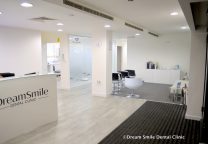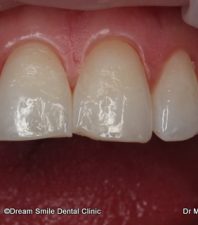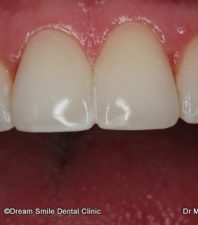Composite Veneers on front teeth
First Full Examination

What will your first visit be like?
Dentistry today has so much to offer…restorative and reconstructive dentistry, porcelain veneers and crowns, bonding, white fillings, whitening, implants…what is right for you? It has to begin with a comprehensive exam and diagnosis.
Unless there is some immediate concern, urgency, or a strictly cosmetic consult, the first visit will involve a comprehensive exam. If there is an immediate concern, it may need to be addressed first, then followed by a comprehensive evaluation. Before you and Dr. Tehranian can determine what is possible for long-term stability with regard to comfort, function, health and esthetics, your current condition is assessed. Your comprehensive exam is a baseline for future comparisons and is the basis for a lifetime master plan for oral health.
Initial Evaluation
Back to topThe following will be done during your initial evaluation:
- Review your medical and dental history
- Clarifying your concerns, wants and expectations and/or problems
- Oral cancer examination
- Tooth examination to check for decay, cracks, wear etc. Photographs to evaluate esthetics and condition of teeth and gums (diagnosis)
- X-rays as needed
- Measuring all gum crevices to check for hidden gum disease
- Condition (quality, quantity and recession level) of gum tissue
- Measurement of mobility or looseness, another sign of problems
- Are fillings or crowns causing gum irritation?
- Temporomandibular joint orthopedic examination
- Range of motion tests to check jaw movements
Post Examination
Back to topAfter your examination:
- Review all findings
- Discuss your treatment recommendations and sequence
- Discuss all fees and give you a written estimate
- Answer all questions to your satisfaction and understanding
Further Evaluation
Back to topIf your condition warrants further evaluation the following will also be done:
- Diagnostic study casts (models of your mouth) if needed
- Measurement to customise models for jaw simulator
- Measurement for how teeth bite together
- Evaluate and study all the above information
- Consult with any specialists, if indicated
- Make a specific diagnosis for your current condition
- Design a blueprint for your care with the diagnostic casts
- Develop an individualised long-term treatment program and sequence




